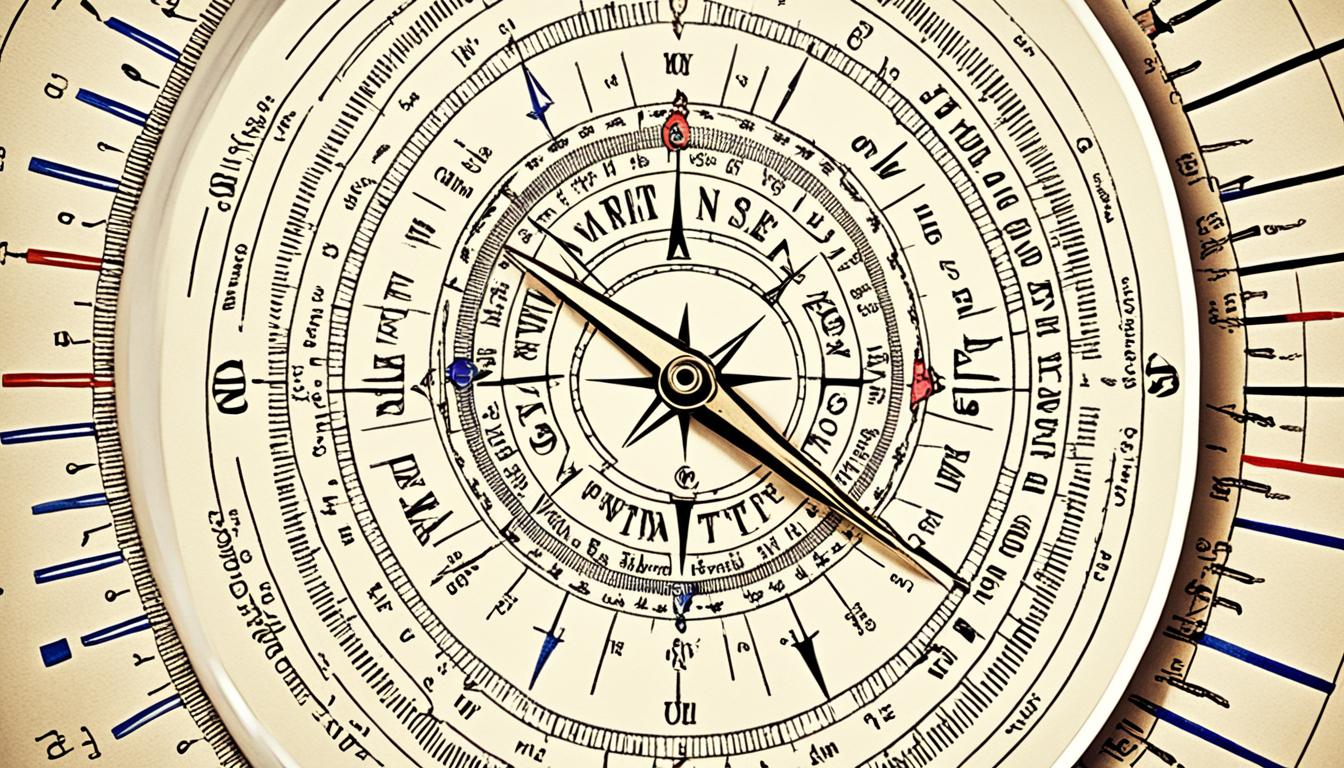Do you ever stop to notice how quickly life goes by amidst distractions and responsibilities? Oftentimes, we get caught up in the endless noise, concerns, and stresses of our daily routines, causing us to overlook the beauty and abundance that exists around us. It’s almost like we’re operating on autopilot, feeling disconnected from the present moment and our own being.
But what if there was a way to break free from this cycle? What if we could find solace and clarity amidst the chaos? The answer lies in the power of stillness. Being in stillness is not about escaping from life’s challenges; it’s about embracing life fully by anchoring ourselves to the present.
In the stillness, we find moments of respite, clarity, and connection. It is a sanctuary where we can slow down, listen to our hearts, and rediscover what truly matters. It is in these moments that we can fully experience the beauty of life, deepen our relationships, and nurture our own well-being.
Through practices like meditation, self-reflection, and cultivating gratitude, we can tap into the transformative power of stillness. It allows us to transcend the limitations of our overactive minds and connect with our inner wisdom and intuition. By cultivating a deep sense of presence, we can anchor ourselves in the present, fully embracing the beauty and uniqueness of each moment.
Join us on this journey of embracing life through stillness. Let us explore the ways we can cultivate awareness, find mental clarity, and anchor ourselves to the present. Together, let’s discover the peace, joy, and fulfillment that await us when we embrace the power of stillness.
Key Takeaways:
- Being present in the moment anchors us to the richness of life.
- Stillness offers a sanctuary where we can find clarity and connection.
- Meditation, self-reflection, and gratitude help us cultivate stillness.
- Embracing stillness allows us to fully experience the beauty of life.
- Join us on this journey to discover the power of stillness together.
The Trap of Overthinking and Restlessness
Overthinking can trap us in a cycle of mental noise and restlessness. It is a common problem that hinders us from living a fulfilled life.
Recognizing the tendency to overthink is the first step towards cultivating a more peaceful mind. Being present in the moment serves as an effective antidote to the chaos of overthinking. It creates a space of awareness that allows us to observe our thoughts without getting entangled in them, leading to a sense of mental freedom.
“Overthinking is like a treadmill for the mind. It keeps us busy but gets us nowhere.” – Anonymous
Overthinking is like a turbulent river, constantly pulling us in different directions. It creates unnecessary mental noise and prevents us from experiencing inner peace. When our minds are consumed by overthinking, we become restless, unable to find solace in the present moment.
However, by redirecting our attention to the present and practicing mindfulness, we can break free from the grip of overthinking. By grounding ourselves in the here and now, we create a mental space where restlessness gives way to calm and clarity.
Here is a simple exercise to help you navigate the trap of overthinking:
- Find a quiet space where you can sit comfortably.
- Close your eyes and take a deep breath, allowing your body to relax.
- Bring your attention to the sensations of your breath. Notice the inhale and exhale, the rise and fall of your belly.
- As thoughts arise, acknowledge them without judgment and gently redirect your focus back to your breath.
- Continue this practice for a few minutes, gradually extending the duration as you become more comfortable.
Benefits of Being Present:
Being present in the moment has several benefits:
- Reduced stress and anxiety
- Increased clarity and focus
- Improved emotional well-being
- Enhanced creativity and problem-solving skills
- Greater appreciation for life’s simple pleasures
Being present allows us to fully engage with our surroundings and experience a deeper sense of connection with ourselves and the world around us. It frees us from the constant mental chatter and restlessness that overthinking brings.
Take a moment today to pause, breathe, and embrace the present. Let go of overthinking and find peace in the stillness of the present moment.
Cultivating Awareness and Understanding
Awareness is not just about noticing our thoughts; it’s about understanding the patterns of our mind. By cultivating awareness and becoming conscious of our habitual thought processes, we can gain valuable insight into the workings of our own minds.
When we develop an understanding of our thought patterns, we can start to see the futility of overthinking and the negative impact it has on our well-being. We begin to realize that much of our mental restlessness is rooted in repetitive thoughts that serve no purpose and only weigh us down.
Understanding our thought patterns allows us to identify unhelpful patterns of thinking and let go of unnecessary mental burdens. By observing our thoughts with a sense of detachment, we can distance ourselves from their influence and cultivate a more peaceful state of mind.
“Cultivating understanding about our thought patterns is key to overcoming mental restlessness and finding peace within ourselves.” – John Kabat-Zinn
Through practices like meditation, journaling, or therapy, we can explore our thoughts and gain a deeper understanding of their origin and impact. This self-awareness is a transformative process that empowers us to choose how we engage with our thoughts and emotions, rather than being consumed by them.
Recognizing Thought Patterns
In order to cultivate awareness and understanding, it is important to recognize the different thought patterns that arise within us. These patterns can manifest as repetitive thoughts, self-critical narratives, or limiting beliefs that hold us back.
By acknowledging these thought patterns without judgment, we can begin to unravel their grip on our minds. Awareness allows us to step back and question the validity of our thoughts, challenging their accuracy and relevance.
Here are some common thought patterns to be aware of:
- Negative self-talk: Persistent self-criticism and harsh judgment.
- Catastrophizing: Assuming the worst-case scenario in every situation.
- Overgeneralization: Drawing broad conclusions based on limited evidence.
- Black-and-white thinking: Seeing situations as either all good or all bad, without considering shades of gray.
- Mind reading: Assuming we know what others are thinking without evidence.
Recognizing these thought patterns is the first step towards developing a greater understanding of our minds and untangling ourselves from their grip. With awareness, we can begin to challenge and reframe these patterns, fostering a more positive and peaceful state of mind.

Reframing Thought Patterns
Once we become aware of our thought patterns, we can begin to reframe them in a more constructive and compassionate way. This involves challenging negative or unhelpful thoughts and replacing them with positive and empowering ones.
Positive affirmations can be a powerful tool for reframing our thought patterns. By consciously choosing positive statements to counteract negative self-talk, we can shift our mindset and cultivate a more optimistic outlook on life.
Additionally, practicing gratitude can help reframe our thought patterns by focusing our attention on the positives in our lives. By regularly expressing appreciation for the things we have, we train our minds to shift their focus from what is lacking to what is abundant.
Mindfulness meditation is another practice that can help us reframe our thought patterns. By observing our thoughts without attachment or judgment, we create space for new perspectives to emerge. This allows us to break free from unhelpful thought patterns and cultivate a more peaceful and present state of mind.
Through cultivating awareness and understanding of our thought patterns, we can free ourselves from the grips of overthinking and mental restlessness. By reframing our thoughts and fostering a positive mindset, we can create a more peaceful and joyful inner world.
The Power of Stillness for Mental Clarity and Peace
Stillness holds a remarkable power to bring us mental clarity and peace in our fast-paced lives. It is a tool that allows us to detach from the chaos of the external world and reconnect with our inner selves. By intentionally creating moments of stillness throughout our day, we can find a sense of calm and focus that revitalizes our mind and restores our inner balance.
In our pursuit of stillness, various practices can guide us towards achieving mental clarity and peace. Meditation, for example, provides us with a dedicated space to observe our thoughts and let them pass without judgment. It allows us to cultivate a sense of deep awareness and presence in the present moment. By regularly engaging in meditation, we can train our minds to quiet the incessant chatter and find a serene oasis within.
Quiet walks in nature or moments of silence can also be powerful avenues for stillness. These activities enable us to disconnect from the constant noise and distractions of modern life and attune our senses to the world around us. As we immerse ourselves in the beauty of nature or embrace the peacefulness of silence, our minds naturally become more tranquil, our thoughts more lucid, and our souls more aligned.
Disconnecting from digital distractions is an essential step in achieving stillness. In a world saturated with technology, it can be challenging to find moments of respite from the constant notifications and demands. By deliberately setting aside dedicated time to unplug and be present, we create an environment conducive to mental clarity and peace.
Mindfulness practices, like yoga or mindful physical activities, can also facilitate stillness. Engaging in these activities allows us to focus our attention on the present moment, connecting our minds with our bodies and improving our overall well-being. Through intentional movement and breath, we cultivate a state of flow that transcends restlessness and brings us a deep sense of calm and centeredness.
As we embrace the power of stillness, mental clarity and peace become our constant companions. We discover the capacity to navigate life’s challenges with a calm and focused mind. Our thoughts become sharper, our decision-making clearer, and our overall sense of well-being heightened. In the stillness, we find solace, strength, and the path to inner transformation.

The Importance of Self-Reflection and Non-Judgment
Self-reflection is a fundamental aspect of stillness. It involves turning our attention inward, observing our thoughts and emotions without judgment. By practicing self-reflection, we gain a deeper understanding of ourselves and foster personal growth. This process allows us to develop a compassionate attitude towards our own experiences and cultivate a sense of acceptance.
When we engage in self-reflection, we create space for self-discovery and self-awareness. It is an opportunity to explore our inner landscape, identify patterns and triggers, and gain insights into our motivations and behaviors. Through non-judgmental self-reflection, we can uncover hidden beliefs, unresolved emotions, and areas for improvement. This deep self-awareness empowers us to make conscious choices and align our actions with our values.
“Self-reflection is the key to unlocking the door to understanding oneself.” – Unknown
Practicing non-judgment is an essential component of self-reflection. It involves suspending our critical inner voice and embracing a compassionate and accepting mindset towards ourselves. When we approach our thoughts and emotions with non-judgment, we create a safe space for self-exploration and growth. Instead of labeling our experiences as good or bad, we acknowledge them as part of our journey. Non-judgment allows us to have a kinder and gentler relationship with ourselves, fostering self-compassion and self-acceptance.
Self-reflection and non-judgment work hand in hand to deepen our understanding of ourselves and promote personal well-being. By dedicating time for self-reflection and cultivating non-judgment, we can embark on a transformative journey of self-discovery and self-acceptance.

Cultivating Gratitude and Compassion
The underlying message of this journey is the importance of gratitude and compassion. Cultivating these qualities enhances our own peace of mind and contributes to a more compassionate world. Gratitude shifts our focus from what we lack to what we have, while compassion helps us connect with others in a meaningful way.
When we cultivate gratitude, we become aware of the abundance that surrounds us. It encourages us to appreciate the small blessings in our lives, fostering a sense of contentment and fulfillment. Instead of constantly striving for more, gratitude allows us to find joy in the present moment and recognize the beauty in everyday experiences.
Here are some practices you can incorporate to cultivate gratitude:
- Keep a gratitude journal: Write down three things you are grateful for each day. This simple practice helps shift your focus towards the positive aspects of your life.
- Express thanks: Take the time to express your gratitude to the people who have made a positive impact on your life. Send a heartfelt thank-you note or simply tell them how much you appreciate them.
- Count your blessings: Take a few moments each day to reflect on the things you are grateful for. It can be as simple as appreciating a beautiful sunrise or enjoying a warm cup of coffee.
Compassion, on the other hand, is the ability to empathize with others and show kindness and understanding. When we practice compassion, we cultivate a deep sense of connection with the world around us. It allows us to extend a helping hand to those in need and offer support and love without judgment.
Here are some ways to cultivate compassion:
- Practice active listening: Truly listen to others without interrupting or judging. Show genuine interest in their experiences and emotions.
- Perform random acts of kindness: Look for opportunities to help others in small ways. It can be as simple as holding the door for someone or offering a kind word of encouragement.
- Practice self-compassion: Treat yourself with the same kindness and understanding you would offer to a dear friend. Be gentle with yourself when facing challenges and practice self-care regularly.
By cultivating gratitude and compassion, we can transform our minds and lives. These qualities not only bring inner peace and fulfillment but also create a ripple effect, inspiring others to cultivate the same in their own lives. Let us embrace the power of gratitude and compassion and create a world filled with love, kindness, and understanding.

The Invitation to Embrace Stillness and Presence
Embracing stillness is a transformative practice that allows us to find serenity amidst the chaos of our lives. It is not about escaping the storms we face, but rather discovering tranquility within them. By creating pockets of silence throughout our day, through practices like meditation or mindful walks, we can recalibrate our minds and nourish our souls.
Stillness offers us a sacred space to detach from external distractions and connect with our inner selves. It is in this space that we can find solace, clarity, and peace. Embracing stillness invites us to let go of the noise and demands of the world, enabling us to recharge and rejuvenate.

Cultivating Presence: Finding Peace in the Present Moment
In addition to embracing stillness, cultivating presence is equally vital. Presence is the art of fully experiencing the beauty of the present moment and finding profound peace beyond external circumstances. It is a state of mind that allows us to engage with life wholeheartedly, free from the shackles of past regrets or future anxieties.
When we embrace presence, we become aware of the intricate details that surround us—the gentle sway of a tree branch, the warmth of sunlight on our skin, or the soothing sound of raindrops. In these moments, time seems to stand still, and we are immersed in the richness of the present.
The Inner Sanctuary of Stillness and Presence
Embracing stillness and cultivating presence create an inner sanctuary where we can find solace, clarity, and unwavering peace. It is a sanctuary that remains unaffected by the turbulent external world. In this inner sanctuary, we discover the ability to navigate life with grace and resilience, no matter the circumstances.
Practicing stillness and presence is not always easy, especially in our fast-paced and often chaotic lives. However, it is a deeply rewarding journey—one that brings us closer to our authentic selves and allows us to experience life in its fullest expression.
Embrace stillness and embrace presence—the invitation to discover serenity within and find profound peace amidst the chaos of life.
Embracing Resistance and Practicing Stillness
In our journey towards stillness, it is natural for resistance to arise. Our minds have become accustomed to constant stimulation, seeking distractions to avoid moments of quiet. However, resistance is not a barrier; it is a sign of growth. Embracing resistance allows us to confront the discomfort head-on and discover true peace on the other side.
Practicing stillness requires dedication and consistency. Each moment of stillness is an opportunity for personal growth and self-discovery. By consciously choosing to embrace stillness, we strengthen our ability to find peace amidst the chaos.
Embracing resistance is like stepping into a river. At first, the current may push against you, but as you surrender to the flow, it carries you forward effortlessly.
Through intentional practice, stillness becomes a familiar companion. It becomes easier to let go of external distractions and turn inward, connecting with our true selves. We learn to navigate the ebb and flow of our thoughts, finding solace in the quiet moments.
The Beauty of Stillness
Embracing stillness allows us to break free from the endless cycles of restlessness and busyness. It opens up space for self-reflection, creativity, and deep introspection. In the inner stillness, we discover a wellspring of wisdom and clarity, guiding us towards a more fulfilling life.
Amidst the hustle and bustle of life, stillness becomes our sanctuary, a place of solace where we can nourish our souls and replenish our spirits.
Now is the time to embrace resistance, to welcome stillness into our lives. Let us approach each moment with open hearts and open minds, ready to embark on a transformative journey of self-discovery and inner peace.

| Embracing Resistance and Practicing Stillness | Benefits |
|---|---|
| Strengthens our ability to embrace stillness | A sense of peace and calm in the midst of chaos |
| Opens space for personal growth and self-discovery | Enhanced self-awareness and clarity |
| Fosters resilience and inner strength | Improved mental well-being and emotional balance |
| Guides us towards a more fulfilling life | Increased creativity and inspiration |
Understanding Restlessness and Discomfort in Meditation
During our meditation practice, it is common to experience restlessness and discomfort. These sensations arise naturally as we invite ourselves to sit in silence and observe the present moment. Rather than viewing them as hindrances, understanding and acknowledging these experiences with compassion and curiosity can help transform them into catalysts for growth.
Restlessness can manifest as a sense of unease or a racing mind, while discomfort may arise in the body, such as stiffness or tension. Instead of resisting or pushing away these sensations, we can develop a gentle and non-judgmental presence, allowing space for them to arise and dissolve naturally.
By embracing restlessness and discomfort during meditation, we create an opportunity for self-exploration and deeper understanding. These experiences can act as mirrors, reflecting the underlying mental and emotional patterns we may be carrying.
Just as clouds pass through the sky, restlessness and discomfort will also come and go. By observing them with an open heart, we cultivate a sense of resilience and inner strength. We learn to navigate the ebb and flow of our inner landscape, fostering a greater sense of peace and stillness.
So the next time restlessness or discomfort arises during your meditation, remember that it is a natural part of the practice. Embrace these experiences with kindness and curiosity, and allow them to guide you on your journey of self-discovery and transformation.
Quotes
“Restlessness and discomfort are not obstacles to stillness; they are the gateways to a deeper understanding of ourselves.” – Unknown
| Restlessness | Discomfort |
|---|---|
| Manifests as a sense of unease or a racing mind | May arise as bodily sensations like stiffness or tension |
| Opportunity for self-exploration and deeper understanding | Mirrors underlying mental and emotional patterns |
| Observation with an open heart cultivates resilience and inner strength | Teaches navigation of the ebb and flow of inner landscape |
| Gateways to a greater sense of peace and stillness | Avenues for self-discovery and transformation |

Cultivating a Gentle Presence and Mindful Acceptance
When confronted with restlessness and discomfort during meditation, we understand the importance of cultivating a gentle and non-judgmental presence. Rather than resisting or pushing away these sensations, embracing them with openness and acceptance creates a safe container for their exploration. Mindful acceptance is the key to acknowledging and embracing the present moment without resistance or judgment, allowing for profound transformation and growth.
In the stillness of meditation, we may encounter inner restlessness and discomfort. It’s natural to yearn for calm and tranquility; however, true serenity comes from accepting and holding space for all experiences that arise. By cultivating a gentle presence, we create a compassionate environment for ourselves to navigate the complexities of our inner landscape.
“Embracing restlessness with openness and acceptance allows for transformative growth.”
Restlessness and discomfort can be powerful catalysts for self-discovery and resilience. Instead of pushing them away, we can lean into these sensations with mindfulness and gentle awareness. Each moment of restlessness becomes an opportunity to observe our thoughts and emotions with kindness and curiosity.
Mindful acceptance allows us to navigate the ebbs and flows of our inner world without judgment. Through this practice, we develop a deep understanding of ourselves and cultivate greater self-compassion. It is in this space of non-judgmental acceptance that true healing and transformation occur.
In meditation, as we cultivate a gentle presence and practice mindful acceptance, we begin to unlock our full potential for growth and inner peace. Each breath becomes an invitation to let go of resistance and surrender to the present moment. We learn to hold space for ourselves and others with grace and compassion.
Anchoring Techniques for Grounding and Stability
When it comes to finding grounding and stability in our meditation practice, restlessness can often be the biggest obstacle. Our minds tend to wander, lacking focus and stability. However, by incorporating anchoring techniques, we can redirect the mind’s energy and cultivate a sense of stability within our practice.
Anchoring techniques are simple yet effective tools that provide a point of reference, allowing us to ground our awareness and bring calmness to our meditation sessions. Here are a few anchoring techniques that you can experiment with:
- Focusing on the Breath: As you sit in meditation, pay attention to the sensation of your breath entering and leaving your body. Use the breath as an anchor to bring your attention back whenever your mind starts to wander. Visualize the breath flowing in and out, allowing it to guide you into a state of tranquility.
- Repeating a Mantra: Choose a word or phrase that resonates with you and repeat it silently or aloud during your meditation practice. This mantra serves as a gentle reminder to bring your focus back to the present moment whenever your mind starts to wander. Allow the vibrations and meaning of the mantra to anchor you to the here and now.
- Using a Visual Object: Place a small object, such as a crystal or a flower, in front of you during meditation. As you close your eyes and enter a state of stillness, visualize the object in your mind’s eye. Keep your attention fixed on the image, allowing it to ground you and bring stability to your practice.
By experimenting with different anchoring techniques, you can discover which method resonates best with you. Notice how these techniques provide a sense of grounding and stability, allowing you to stay present and focused during your meditation sessions.
| Technique | Description |
|---|---|
| Focusing on the Breath | Using the breath as a point of focus to anchor attention and cultivate presence. |
| Repeating a Mantra | Using a word or phrase to bring the mind back to the present moment and establish stability. |
| Using a Visual Object | Utilizing a physical or mental image as a visual anchor for grounding and stability. |
Each time you practice anchoring techniques, be patient with yourself. Remember that cultivating grounding and stability takes time and consistent effort. With practice, you will find that anchoring techniques become second nature and provide a sense of stability not only in your meditation practice but also in your day-to-day life.
Embrace stability and experience the transformative power of anchoring techniques in your meditation practice.

Exploring Movement Meditation
Restlessness and discomfort can sometimes be invitations for movement rather than obstacles to stillness. When our minds and bodies are in a state of restlessness, integrating movement meditation practices can help us find balance and tranquility. Two popular forms of movement meditation are walking meditation and gentle yoga.
Walking Meditation
Walking meditation is a practice that combines mindfulness and physical movement. It involves walking slowly and deliberately, paying close attention to each step and the sensations in the body. As we move, we bring our awareness to the present moment, cultivating a sense of grounding and peace.
Find a quiet outdoor space or a walking path where you can walk without interruptions. Begin by standing still and taking a few deep breaths to center yourself. Then, start walking at a natural pace, feeling the connection between your feet and the earth. Pay attention to the sensations in your body, the movement of your legs, and the rhythm of your breath. If your mind starts to wander, gently bring it back to the sensations of walking.
Gentle Yoga
Gentle yoga is a soothing and accessible form of yoga that focuses on slow, mindful movements and gentle stretches. It is suitable for all fitness levels and can be customized to your body’s needs. By combining breath with movement, gentle yoga promotes relaxation, flexibility, and mental clarity.
To practice gentle yoga, find a quiet and comfortable space where you can move freely. Start with a gentle warm-up, such as neck rolls and shoulder stretches. Then, move into gentle poses like seated forward folds, gentle twists, and supported standing poses. Allow your breath to guide your movements and listen to your body’s signals of comfort and ease.

Embrace the fluidity between stillness and movement, honoring the wisdom of your body and its need for balance and release. Whether you choose walking meditation or gentle yoga, both practices offer an opportunity to cultivate mindfulness, find inner peace, and connect with your body and breath.
Conclusion
Restlessness and discomfort are powerful teachers within the landscape of meditation, providing opportunities for growth and transformation. As we embrace these challenges with compassion, cultivate a gentle presence, explore anchoring techniques, integrate movement meditation, nurture mindful acceptance, and practice gratitude and self-compassion, we can transform restlessness into stillness and discomfort into resilience.
Embracing the dance between stillness and restlessness leads to inner calm and awakening, creating a sanctuary of peace, resilience, and unwavering presence in our meditation practice. Through this journey, we discover the profound power of being fully present in every moment, witnessing the ebb and flow of our thoughts and emotions, and finding a deep sense of inner peace.
Let us continue to practice and nurture our meditation practice, anchoring ourselves in the present moment. The awakening that comes from the stillness of our minds empowers us to navigate life’s challenges with grace and clarity. May our meditation practice be a source of strength, tranquility, and balance, enriching every aspect of our lives and igniting the flame of inner awakening.
FAQ
How can being in stillness help us embrace life and anchor us to the present?
Being in stillness allows us to cultivate awareness and understand the patterns of our mind. It helps us overcome overthinking and mental restlessness, leading to mental clarity and peace. By being present in the moment, we can let go of unnecessary mental burdens and live a more fulfilled life.
What is overthinking and how does it trap us in mental noise and restlessness?
Overthinking is a common problem that hinders us from living a fulfilled life. It is a cycle of mental noise and restlessness that keeps us trapped in chaotic thoughts. Recognizing the tendency to overthink is the first step towards cultivating a more peaceful mind. Being present in the moment serves as an effective antidote to overthinking and creates a space of awareness that allows us to observe our thoughts without getting entangled in them.
How can cultivating awareness and understanding help us overcome overthinking and restlessness?
Cultivating awareness and understanding allows us to recognize the patterns of our mind and see the futility of overthinking. By becoming aware of our habitual thought processes, we can let go of unnecessary mental burdens and overcome mental restlessness. This understanding is crucial in cultivating a more peaceful state of mind.
How does stillness contribute to mental clarity and peace?
Stillness is a powerful tool for achieving mental clarity and peace. It involves creating moments in our day to disconnect from the external world and connect with our inner selves. Practices like meditation, quiet walks, or moments of silence help center our thoughts and calm our minds. Through intentional effort and mindfulness practices, we can achieve stillness and experience the benefits of mental clarity and peace.
Why is self-reflection and non-judgment important in cultivating stillness?
Self-reflection is a key aspect of stillness. It involves understanding and acknowledging our emotional states without judgment. This non-judgmental approach allows us to accept our feelings as they are and leads to a deeper understanding of ourselves. Self-reflection aids in developing a compassionate attitude towards our own experiences and fosters personal growth.
How can cultivating gratitude and compassion contribute to our peace of mind and a more compassionate world?
Cultivating gratitude and compassion enhances our peace of mind and contributes to a more compassionate world. Gratitude shifts our focus from what we lack to what we have, fostering contentment and inner peace. Compassion helps us connect with others in a meaningful way, promoting understanding and kindness. By cultivating these qualities, we can transform our minds and lives.
How can we embrace stillness and presence amidst the chaos of life?
Embracing stillness is about finding serenity within the chaos of our lives. It is not about escaping the storm but discovering tranquility amidst it. Creating pockets of silence throughout the day, through practices like meditation or mindful walks, allows us to recalibrate our minds and souls. Cultivating presence enables us to fully experience the beauty of the present moment and find peace beyond external circumstances.
What can we do to overcome resistance and embrace the practice of stillness?
Resistance may arise when we begin to embrace stillness, as our minds are accustomed to constant stimulation. However, this discomfort is a sign of growth and can be embraced as part of the journey. Through practice, our ability to embrace stillness strengthens, and we can find true peace on the other side of resistance. Each moment of stillness is an opportunity for personal growth and self-discovery.
How can we understand and navigate restlessness and discomfort during meditation?
Restlessness and discomfort can manifest during meditation, but they are natural responses when we invite ourselves to sit in silence and observe the present moment. Understanding and acknowledging these experiences with compassion and curiosity can help transform them into catalysts for growth. It is essential to develop a gentle and non-judgmental presence, allowing space for these sensations to arise and dissolve naturally.
How can we cultivate a gentle presence and practice mindful acceptance during meditation?
When confronted with restlessness and discomfort during meditation, it is crucial to cultivate a gentle and non-judgmental presence. Instead of resisting or pushing away these sensations, embracing them with openness and acceptance allows for a safe container for their exploration. Mindful acceptance, acknowledging and embracing the present moment without resistance or judgment, creates space for profound transformation and growth.
What are some anchoring techniques that can help with grounding and stability in meditation?
Restlessness often stems from a lack of focus or grounding. Anchoring techniques provide a point of reference amidst restlessness and help bring stability to your meditation practice. These techniques can include focusing on the breath, a mantra, or a visual object. Experimenting with different anchors and observing how they provide grounding and stability can bring about a sense of calm during meditation.
How can movement meditation, such as walking meditation or gentle yoga, contribute to stillness?
Restlessness and discomfort can sometimes be invitations for movement rather than obstacles to stillness. Integrating movement meditation practices, like walking meditation or gentle yoga, into your routine allows the body to find its own rhythm and release pent-up energy, creating a sense of ease and flow. Embracing the fluidity between stillness and movement honors the wisdom of your body and its need for balance and release.
How does embracing restlessness and discomfort lead to inner calm and awakening in our meditation practice?
Restlessness and discomfort are powerful teachers within the landscape of meditation. By embracing these challenges with compassion, cultivating a gentle presence, exploring anchoring techniques, integrating movement meditation, nurturing mindful acceptance, and practicing gratitude and self-compassion, we can transform restlessness into stillness and discomfort into resilience. Embracing the dance between stillness and restlessness leads to inner calm, awakening, and a sanctuary of peace and unwavering presence in our meditation practice.
Augustus is the visionary leader and Editor-in-Chief of Personality-Test.net. With an unwavering commitment to quality and authenticity, he oversees all content, ensuring it enlightens and empowers our audience. Augustus believes deeply in the transformative power of self-awareness and is dedicated to making Personality-Test.net a beacon for those on a journey to understand themselves better.










